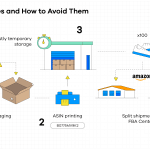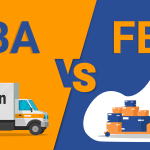
When selling products on Amazon, the Fulfilled By Amazon process, commonly understood as FBA, involves sellers storing their products in the Amazon warehouse. When an order is received on Amazon, the product is shipped from the Amazon warehouse to the customer.
However, a second, less well-known option is available through the FBA: Multi-Channel Fulfillment, or MCF. This option allows sellers to use FBA product inventory to ship to their other customers from eBay or sell on various websites.
The Benefits of MCF
The MCF option allows merchants without a warehouse to increase their exposure and sell through other channels besides Amazon. Using MCF greatly benefits the seller, as Amazon is well-recognized for its reliability. It brings more customers when they see that the seller uses the Amazon warehouse for their goods.
Additionally, the seller benefits by avoiding warehousing costs, salaries for employees working in those warehouses, and storage issues. These benefits are available while the product remains safe and secure in Amazon’s warehouse.
The Disadvantages of MCF
While this may seem like a business-savvy way to handle shipping for multiple channels, it is important to understand that there are also some disadvantages to using this option.
The first disadvantage is the fees incurred. Amazon charges a storage fee based on the product’s cubic dimensions and the space it takes up on the floor. However, the more significant fees are the per-order and per-item fees. This fee is $1.90 per order when shipping standard.
There is also a 60-cent per item fee and a 45-cent weight handling fee for the first 15 pounds. These fees cover Amazon’s charges for picking, packing, and shipping, which are the costs sellers would incur if they maintained their own warehouses and employees. Even with these fees, Amazon is still providing a saving compared to maintaining a separate facility and staff.
Secondly, the seller must stay on top of what he has stored by Amazon in order not to run out of inventory. The seller only knows how much inventory he has from Amazon’s reports. Descartes Sellercloud’s Restock FBA feature assists the seller in keeping track of their inventory.
Thirdly, there is the issue of a Stock Keeping Unit (SKU) mismatch, which can occur with the utilization of MCF. This particular situation is increased when sellers provide a set with two or more items to a customer, and those items are stored separately and only packaged at the time of sale.
Because you ship the items to Amazon separately, that makes them into two SKUs, while the customer’s SKU is singular, as the products are sold as a set. That will cause confusion, as the set won’t be recognized.
Fourthly, entering orders is also more labor-intensive while using the FBA option because it is necessary to manually enter orders onto the Amazon website. The process takes time that could otherwise be used for business enhancement or product improvement.
Fifthly, when using FBA, the seller manually needs to update the outside channels when the item has been shipped from Amazon, as Amazon does not have the option to update those outside channels for the seller.
A final issue is that the seller is not in control when the inventory is in transit, as Amazon might change its storage location. When products are in transit, they are listed as not in stock. FBA must first receive the inventory before it is available for sale, which can take three to five days and cause a decrease in sales.
Descartes Sellercloud Makes the Difference
For merchants who wish to utilize FBA and have these disadvantages removed, the solution is Descartes Sellercloud. This software addresses each of these concerns. Descartes Sellercloud can pull up Amazon settlements and calculate profit and loss based on all accumulated fees.
The software will provide the information to the order or item so that each seller can know the updated profit margins. By providing this information to the seller, it helps them avoid guessing or estimating their fees.
Descartes Sellercloud also handles entering the orders from outside channels and saves the seller from the time-consuming processes of manually entering the orders for Amazon. Descartes Sellercloud even offers an auto-ship feature so that an update from Amazon on current inventory results in updates to eBay and other websites.
Mismatched SKUs are also a thing of the past with the use of Descartes Sellercloud, as the software has a bundle kit that breaks down the bundled item into its components in order for them to be recognized and shipped together properly.
When one is looking to sell via Amazon, having your orders fulfilled by Amazon has always proved to be a smart choice. Using the Multi-Channel Fulfillment option may lead to some difficulties, but if one can overcome the glitches, selling via MCF is the way to go.
Schedule a free Descartes Sellercloud demo today.




